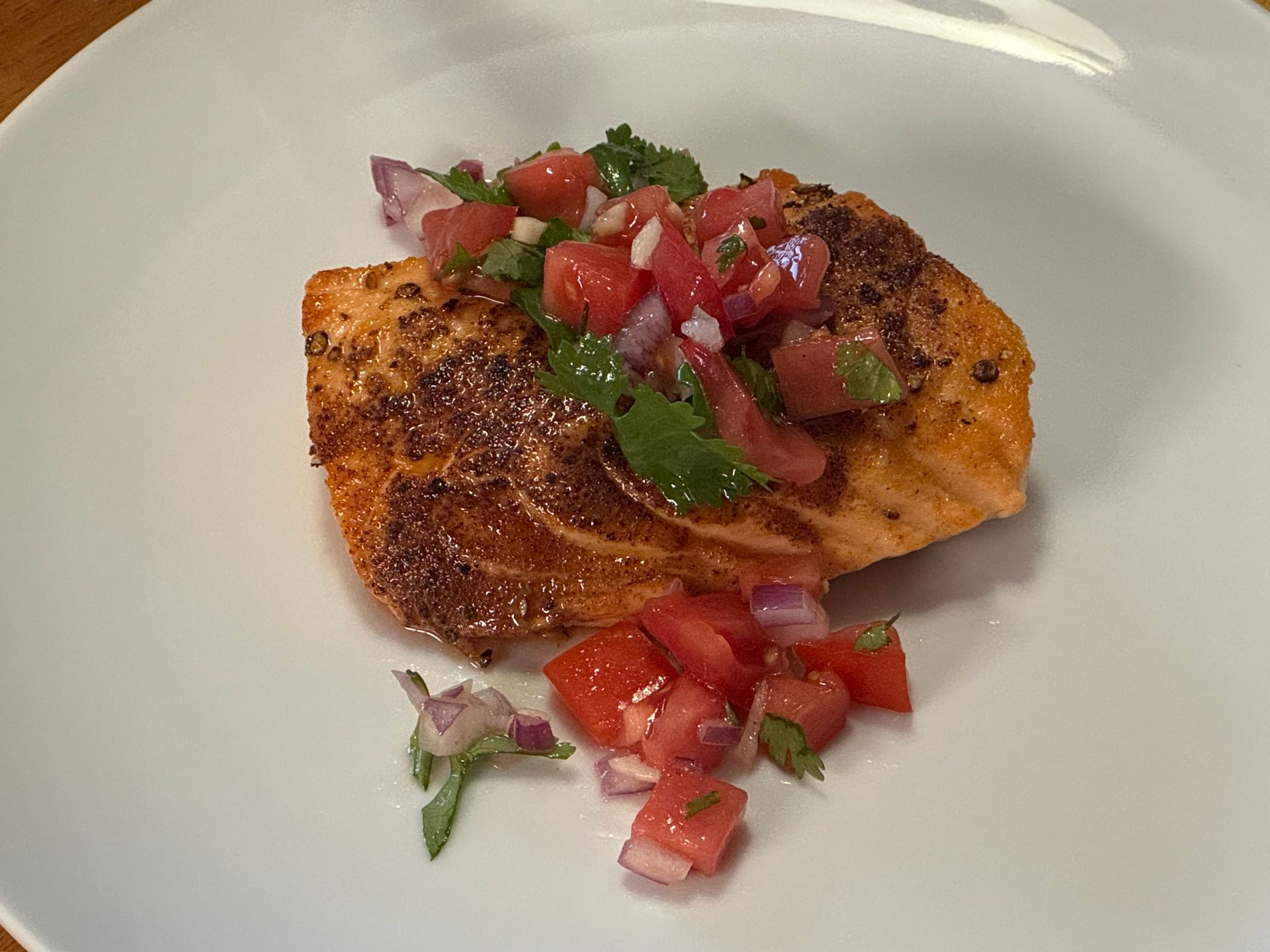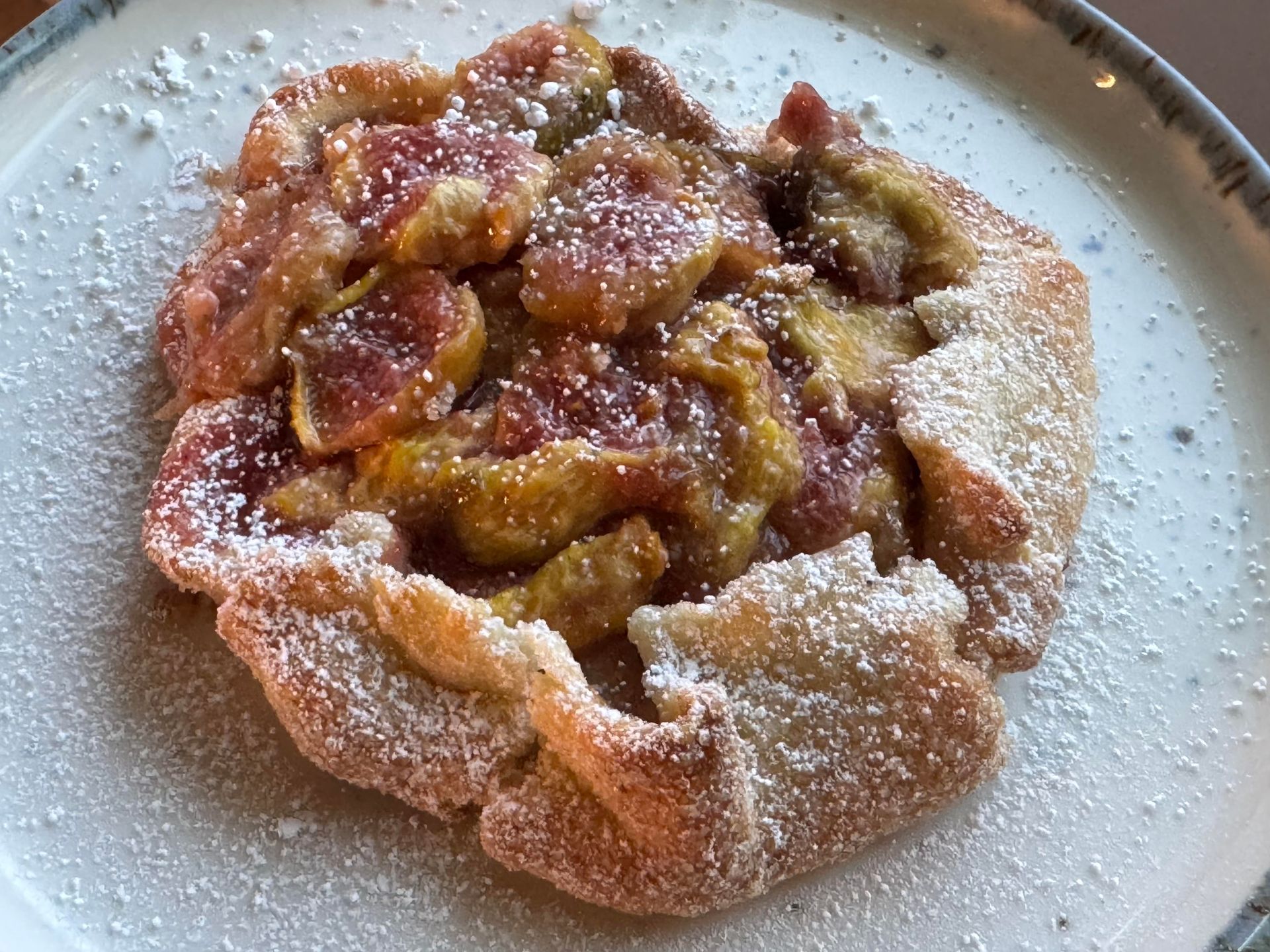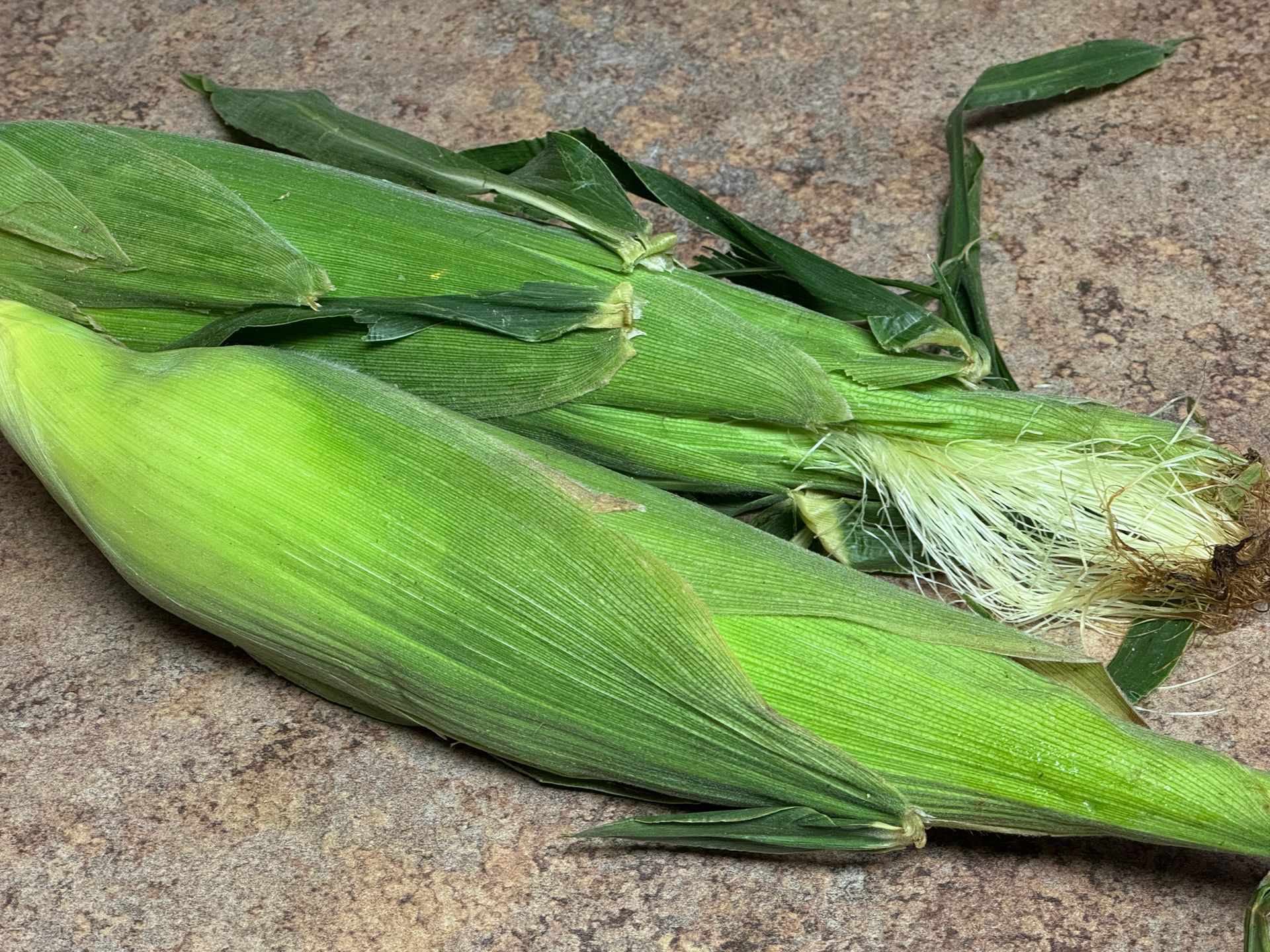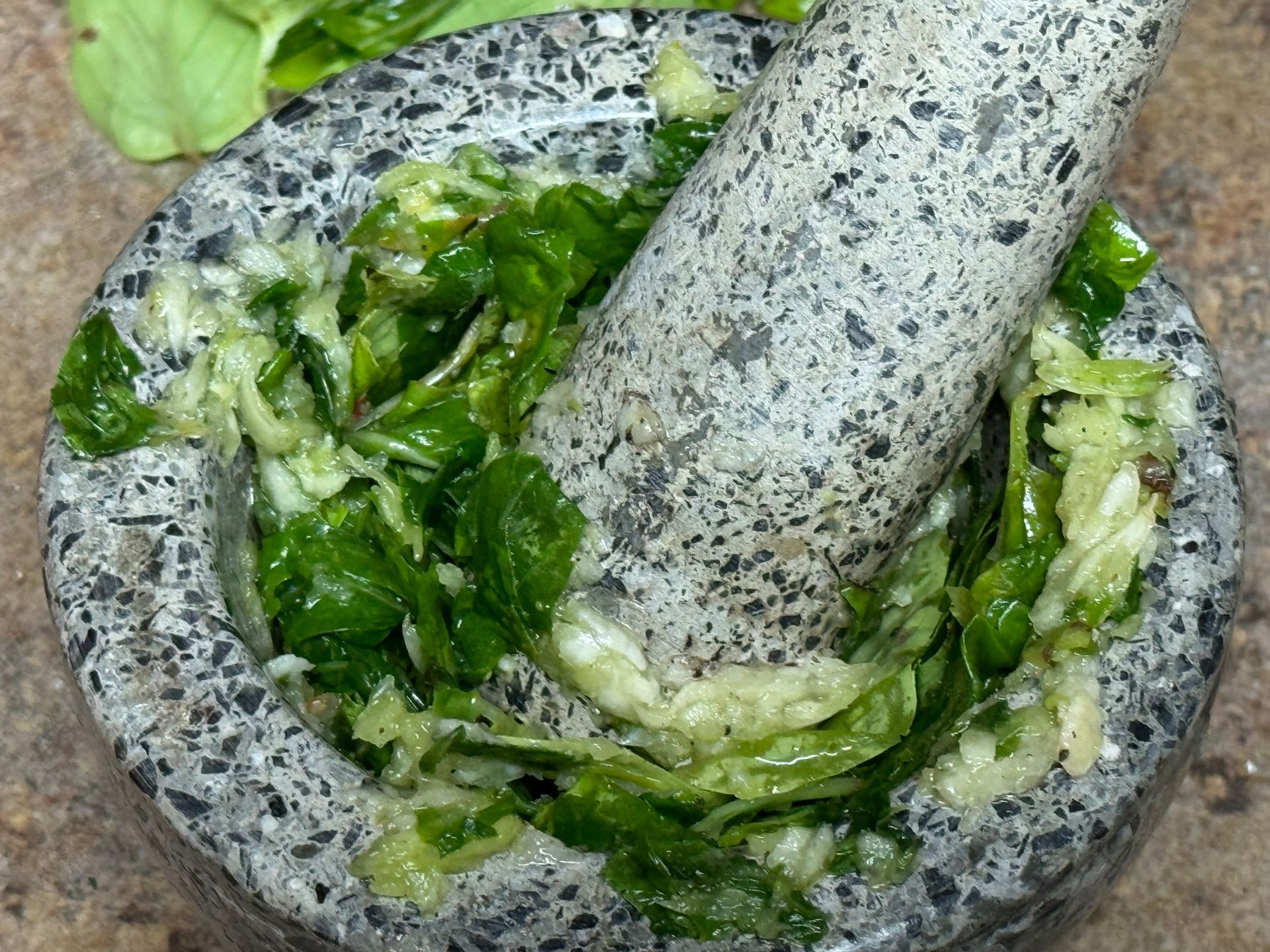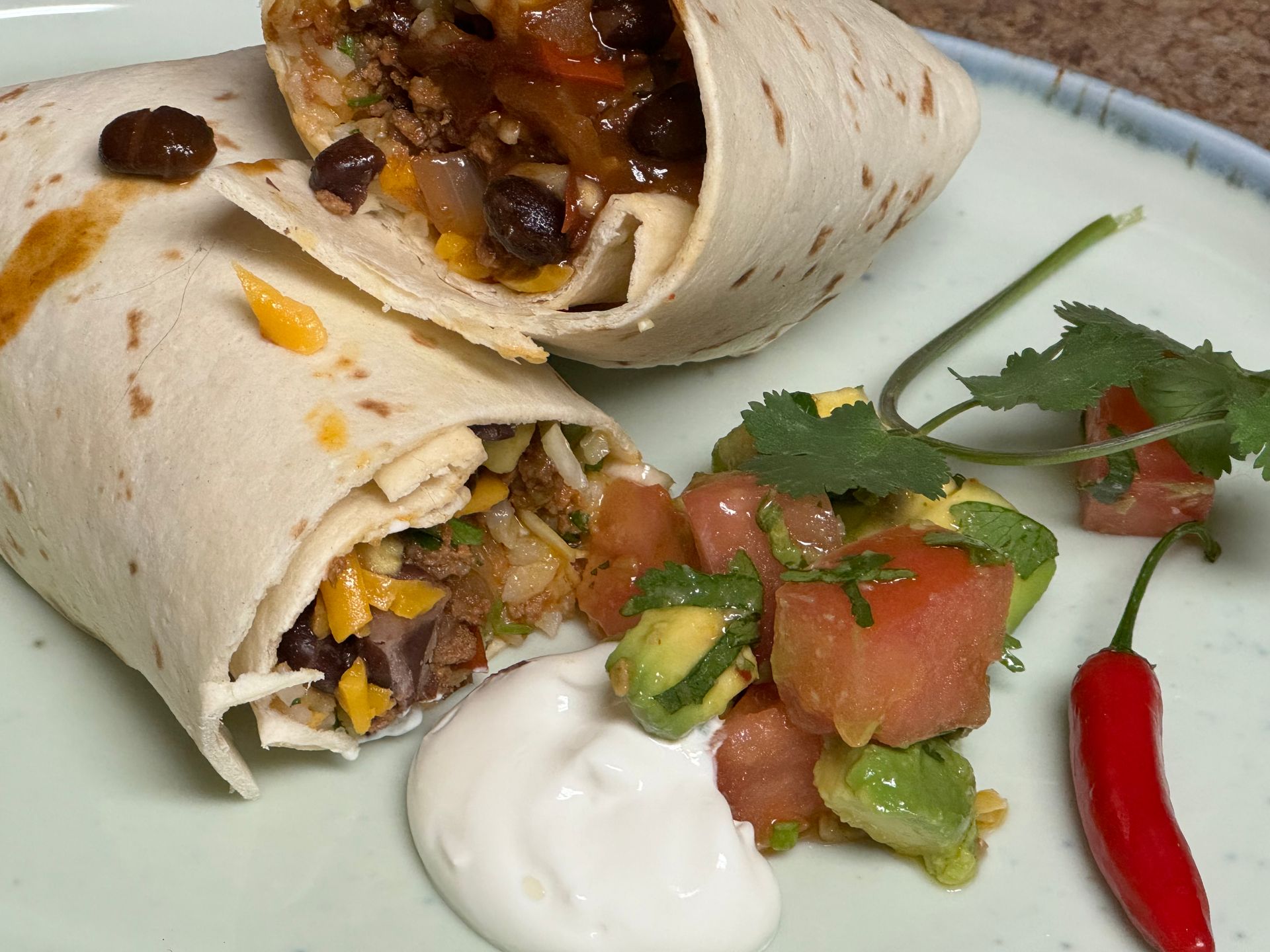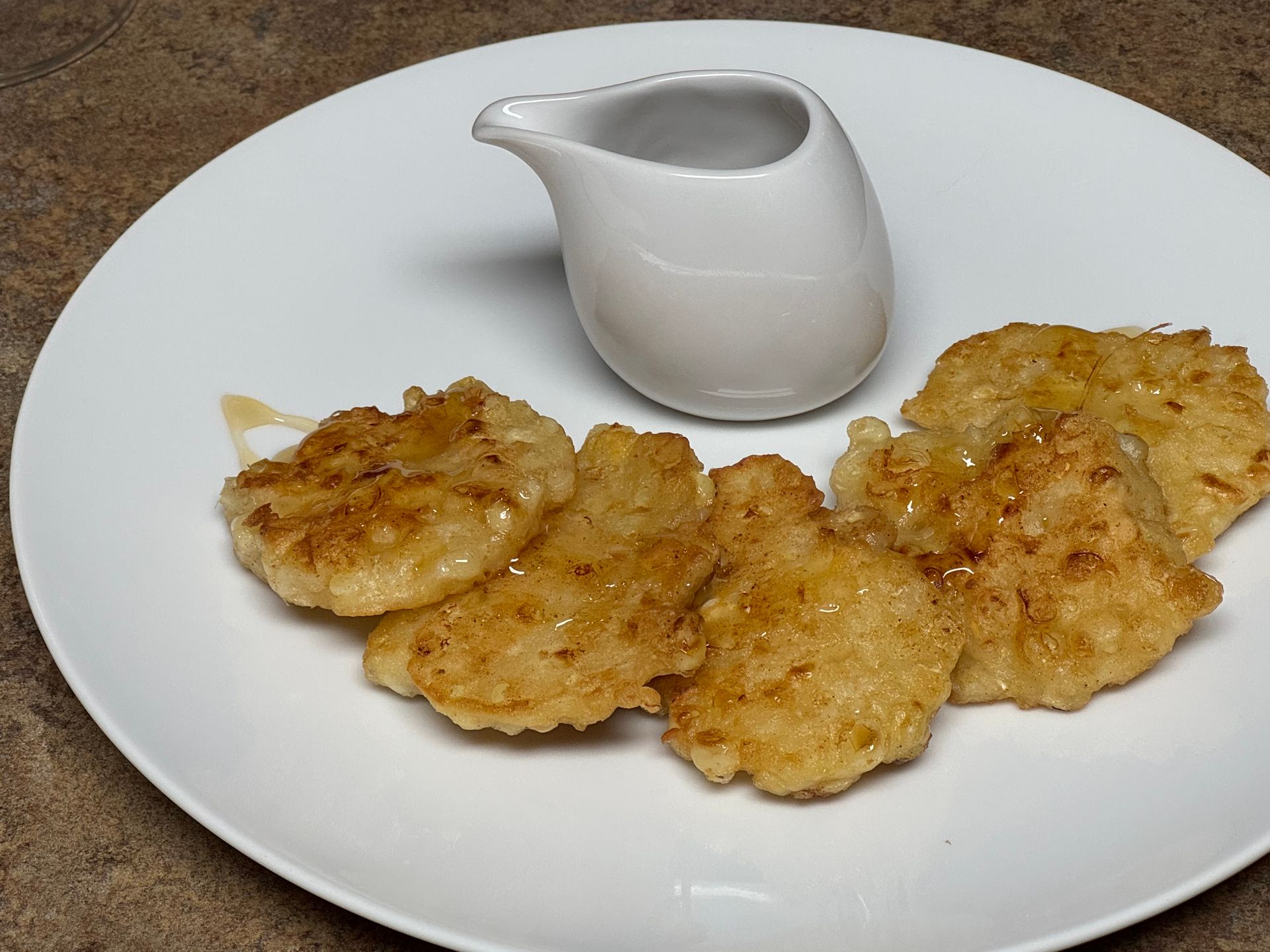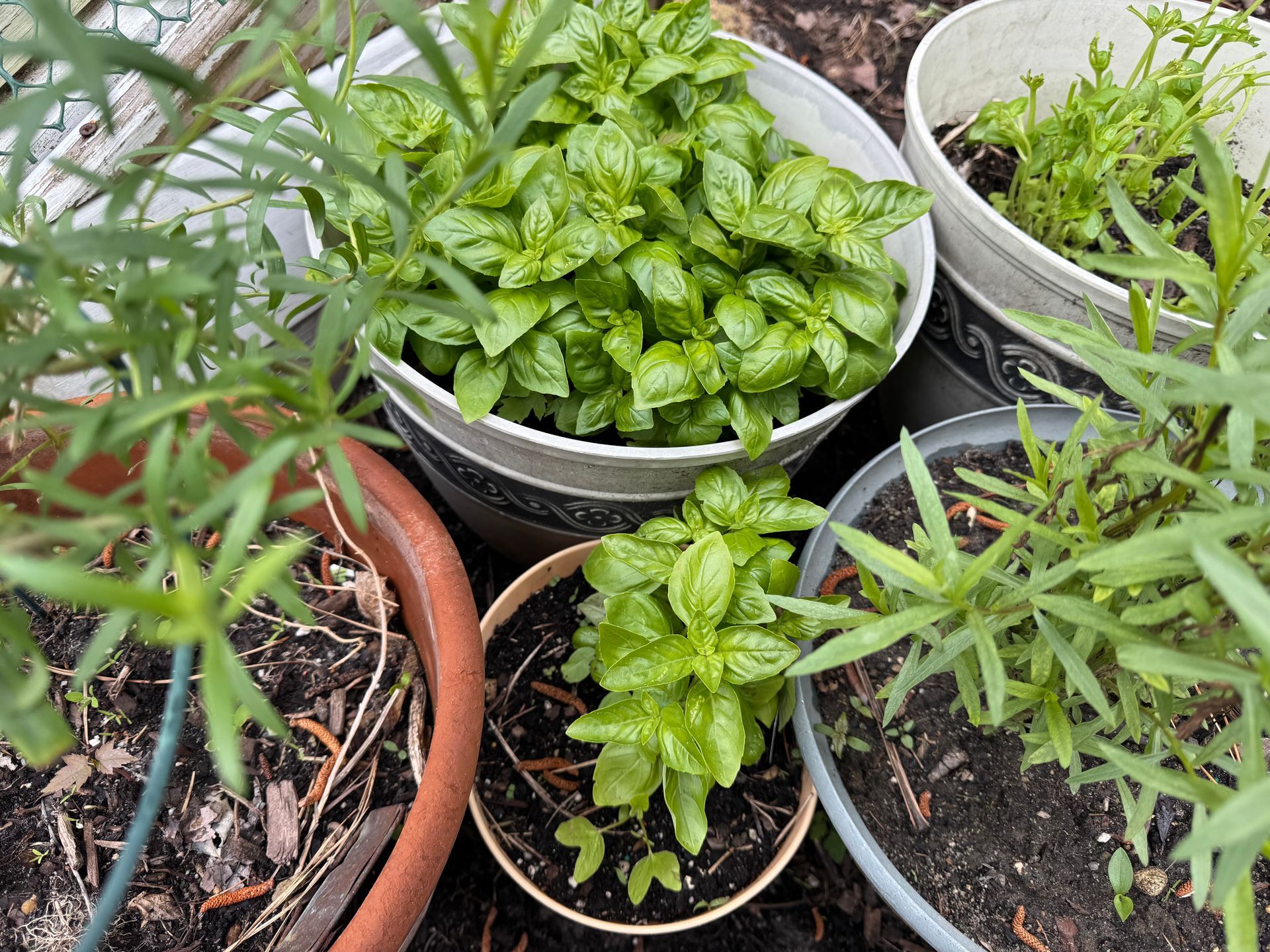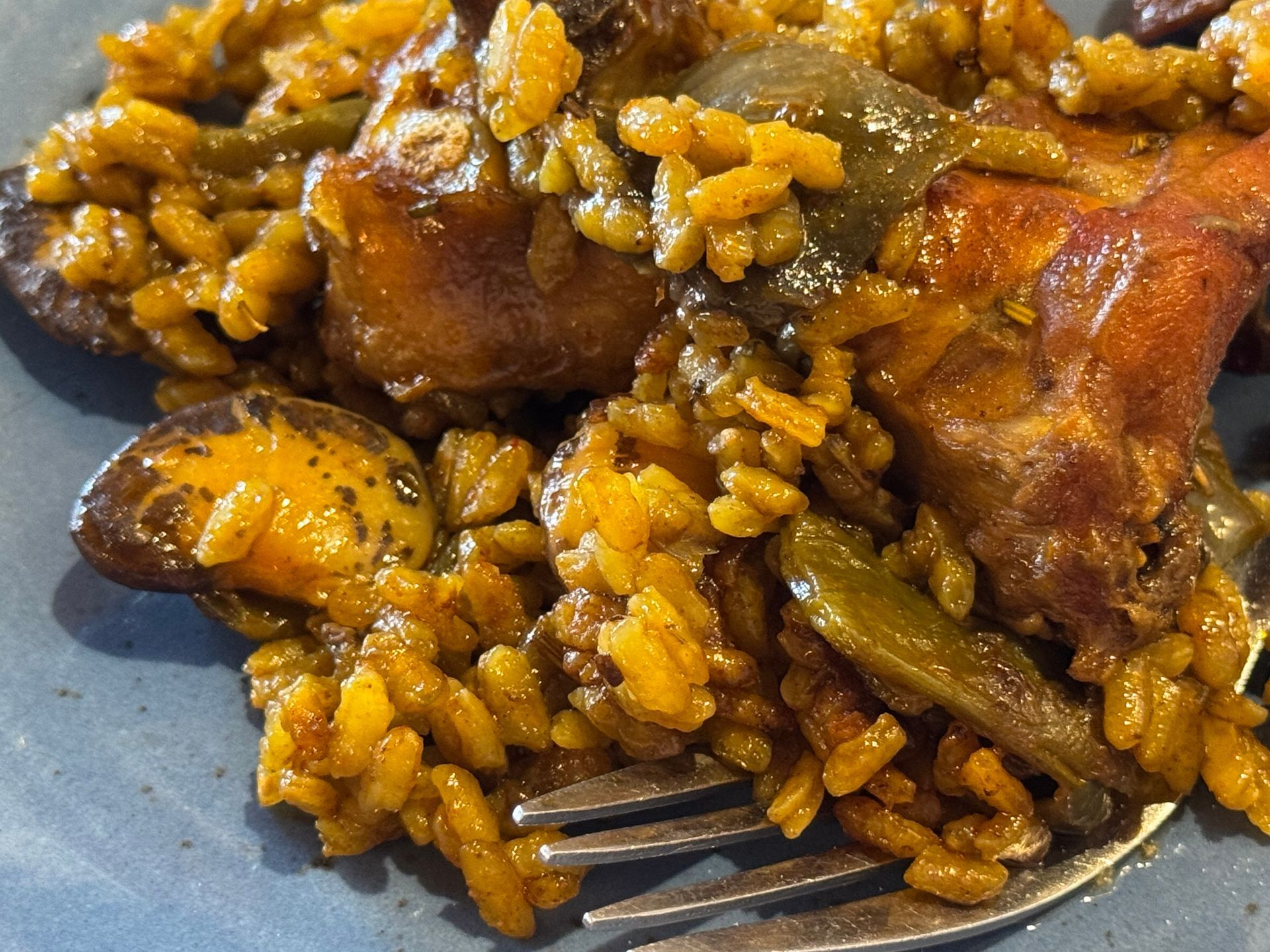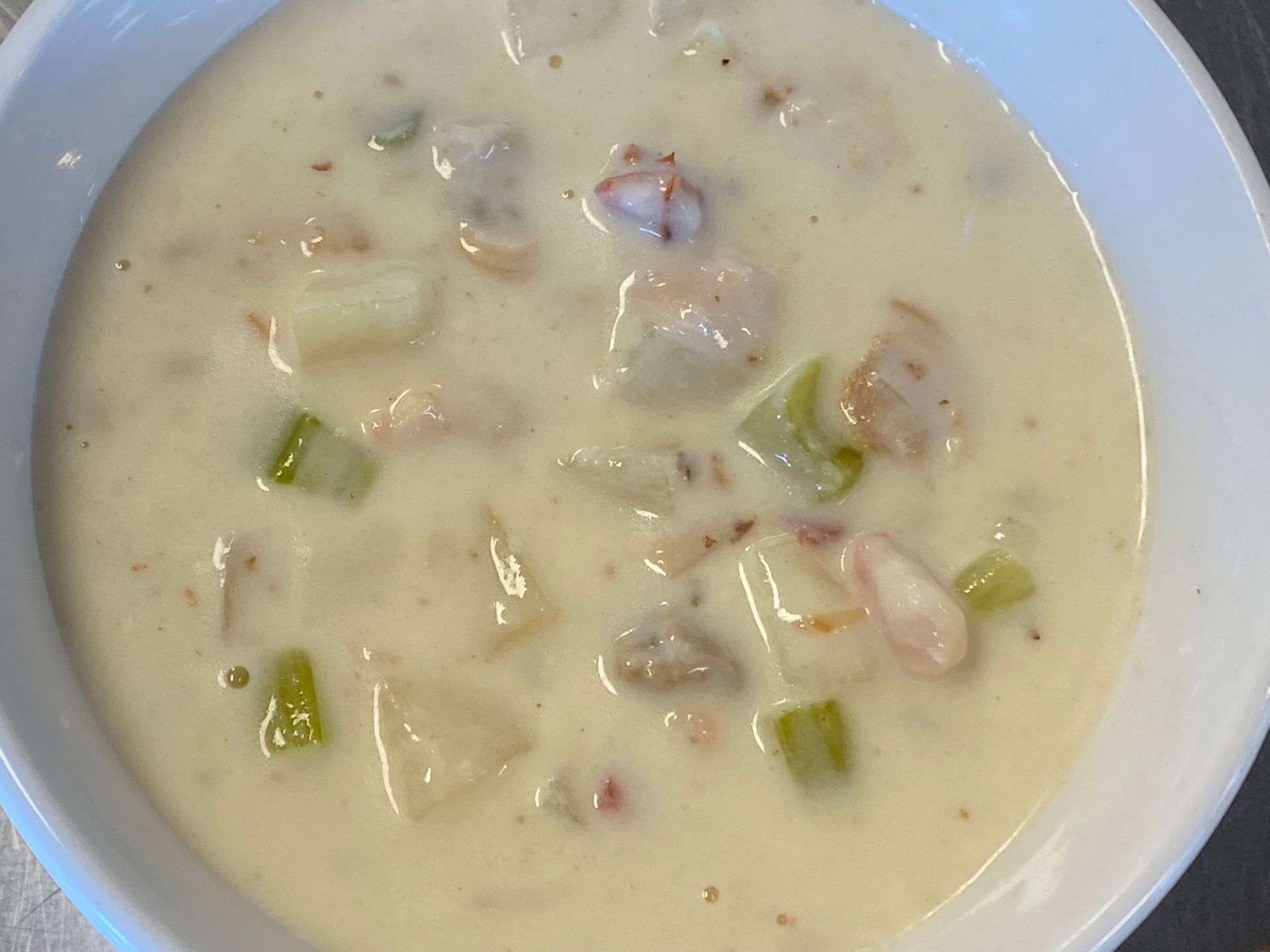
At Campbell's, marketers often asked the chefs to create Rhode Island Clam Chowder. We tried for years to find the true origin of RICC.
Eventually I did find the 'consumer Gold Standard' for Rhode Island chowder at the Jersey shore. The young lady at the counter poured a heaping ladle of NE Clam Chowder into a large, cardboard soup bowl, ladled a large portion of Manhattan clam chowder on top and proudly handed it to me with oyster crackers... Rhode Island Clam Chowder!
Clam Chowder
Chowder is one of those soups enjoyed all year long. In the summer, it's a favorite at the shore and hearty and satisfying on a cold, winter day.
New England Chowder generally has pork, clams, potatoes and cream.
Manhattan Chowder is tomato based. while Rhode Island Chowder is creamy tomato... at least at the Jersey shore.
In my research it seems that the chowders were named for the pot they were cooked in called a chaudière-eventually changed to chowder. It generally is thickened with a roux & has pork fat, onions, celery, clams and potatoes-often finished with cream.
Prep Time: 30 min
Cooking Time: 40 min
Yield: 10 portions
Ingredients
30 ea. Top neck Clams
1 ea Bay leaves
2 ea. Thyme stems
1 qt. Water
1 Cup Clam juice
2 oz Pork fatback, chopped fine .
2 Cups Spanish Onions, small diced
1 Cup. Celery, small diced
5 oz. AP Flour
2 Cups Potatoes, Idaho, peeled, small dice
1 pt. Heavy cream
1 pt. Milk
t.t. Salt & Pepper
t.t. L&P, Tabasco
How to steam Clams
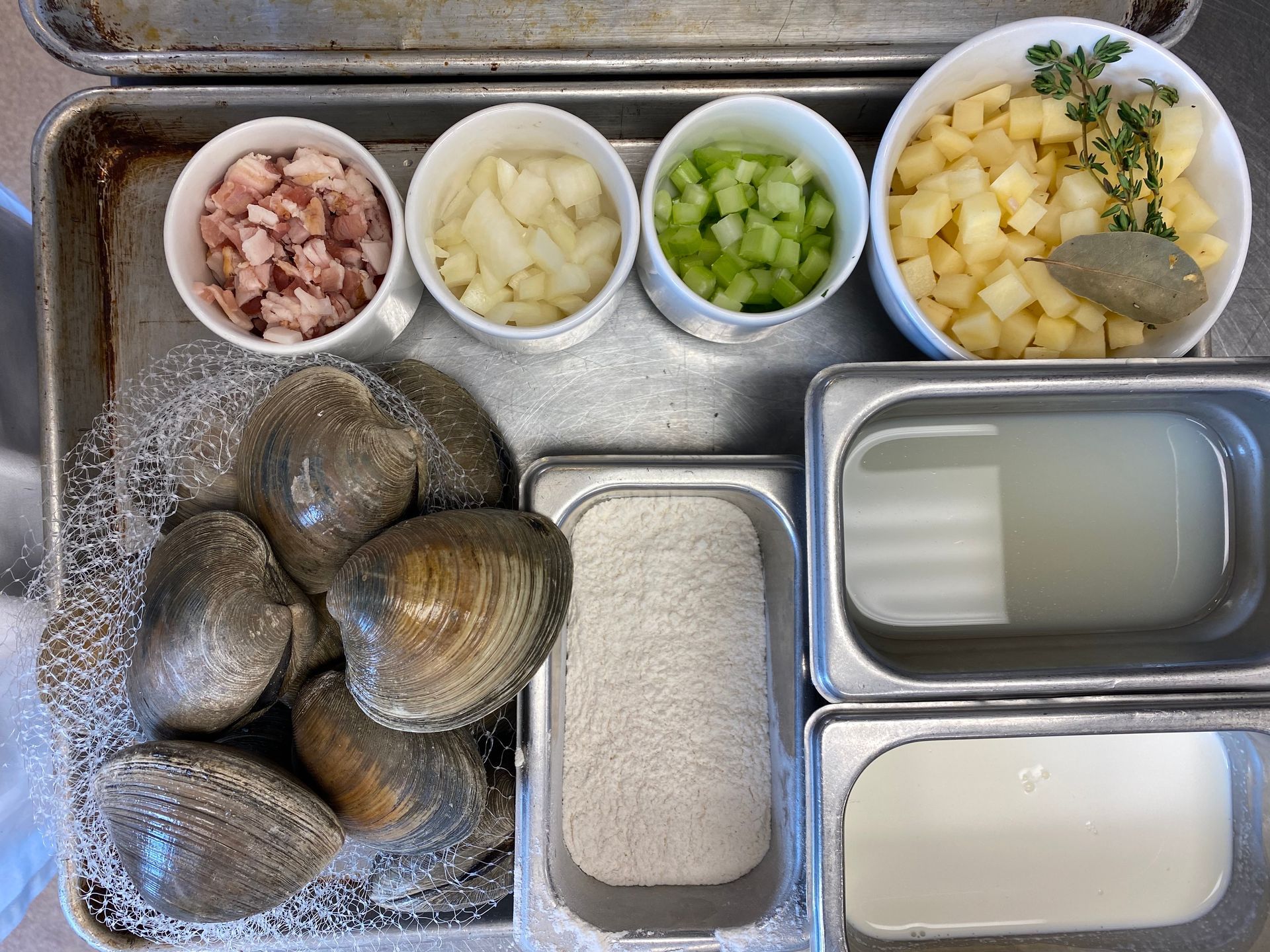
Step 1
Rinse the clams in cold water to get all of the sand off, if the clams are especially sandy, you might submerge in cold, salted water to purge (not too long or the clams could die-about 20 minutes)
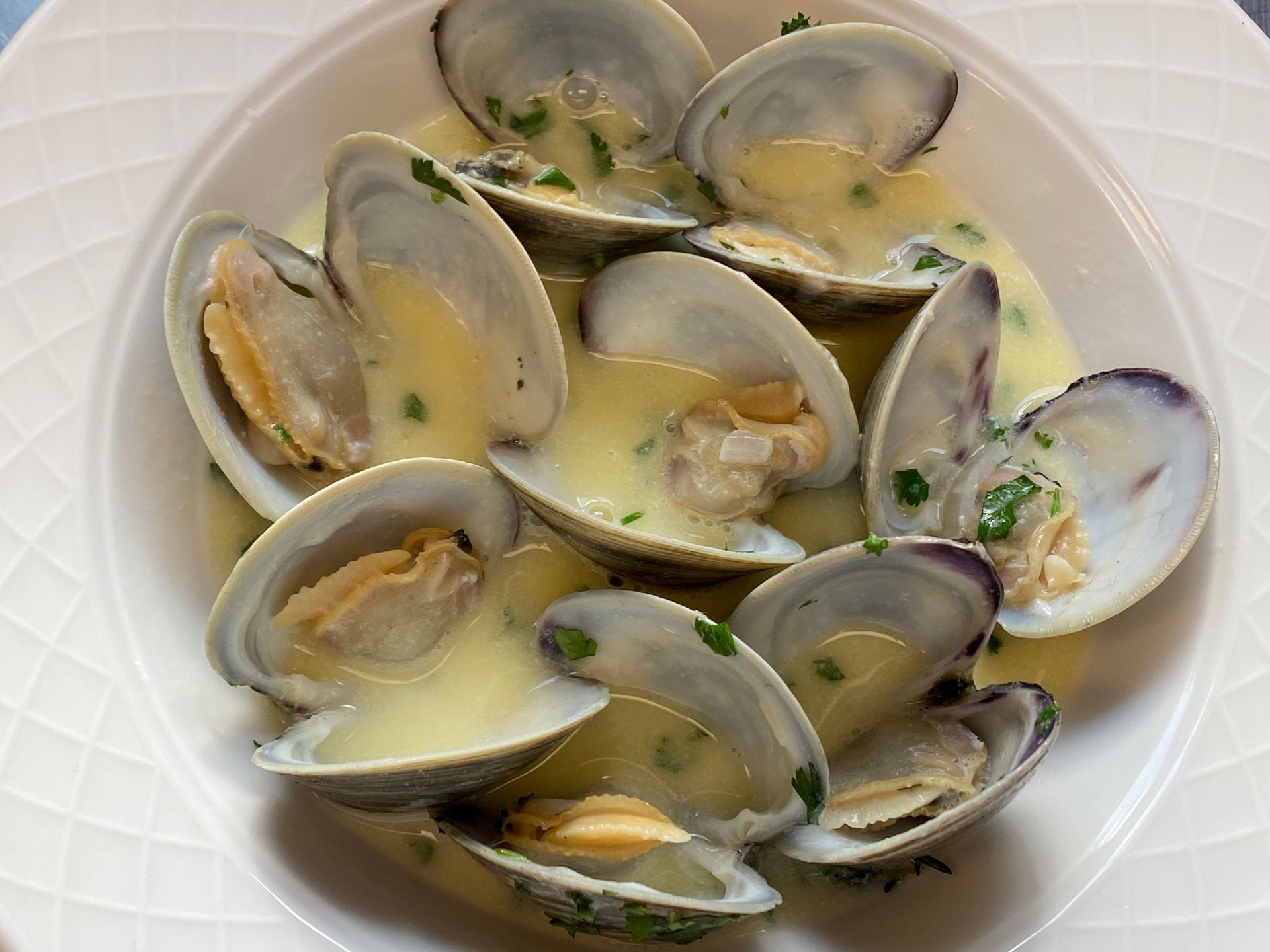
Step 2
Put the clams, bay leaf, thyme, water and clam juice in a pot and cook covered until the clams open. (about 4 minutes) Strain and let the clam juice cool; discard the bay leaf and thyme-pick the clams from the shells and chop. Reserve the clams.
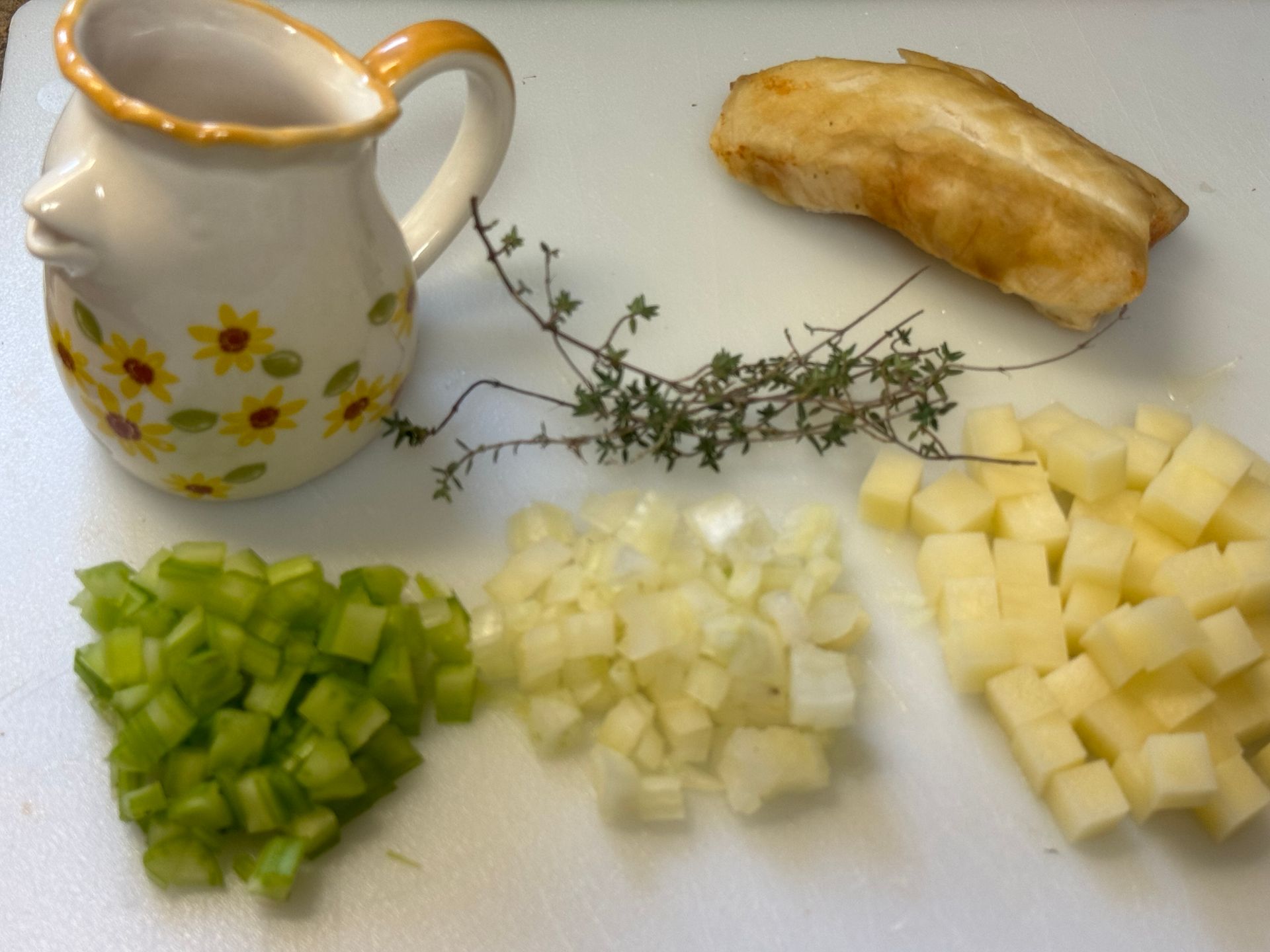

Step 3
Heat a heavy sauce pot, add the pork fat back and render, add the onions and celery and sweat until translucent, do not brown. Add the flour and using a wooden spoon, mix the flour and fat to create a white roux. (about 3 minutes)
Add the strained clam juice slowly, stirring to create a smooth chowder base. When all of the clam juice has been added, put in the potatoes and simmer until the potatoes are tender and the flour has cooked. (about 20 minutes) stir occassionally with a wooden spoon to be sure the roux is not clumping or sticking to the bottom.
Step 4
Add the cream, milk, seasonings and bring to a simmer; add the clams and enjoy.

